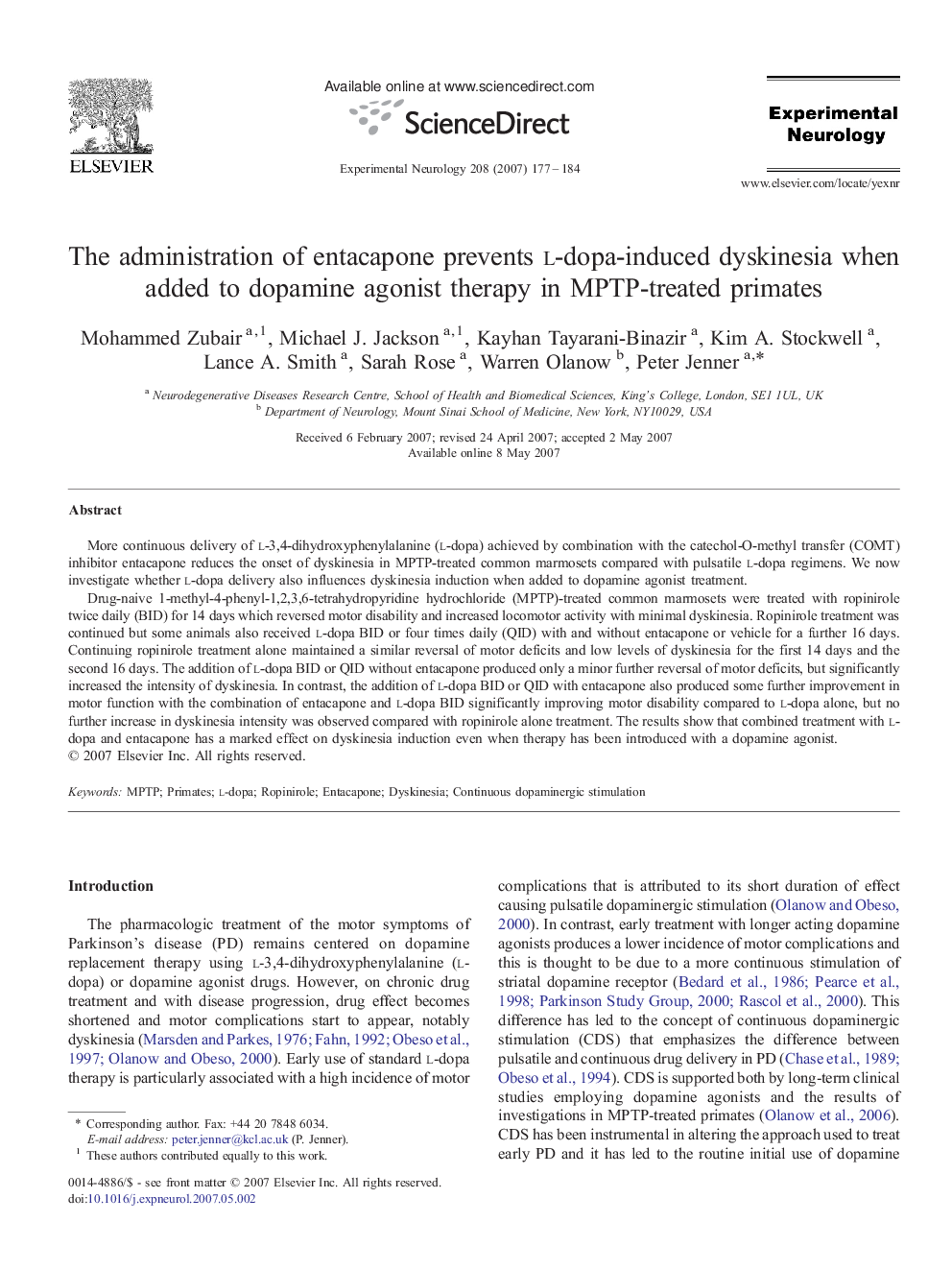| Article ID | Journal | Published Year | Pages | File Type |
|---|---|---|---|---|
| 3056868 | Experimental Neurology | 2007 | 8 Pages |
More continuous delivery of l-3,4-dihydroxyphenylalanine (l-dopa) achieved by combination with the catechol-O-methyl transfer (COMT) inhibitor entacapone reduces the onset of dyskinesia in MPTP-treated common marmosets compared with pulsatile l-dopa regimens. We now investigate whether l-dopa delivery also influences dyskinesia induction when added to dopamine agonist treatment.Drug-naive 1-methyl-4-phenyl-1,2,3,6-tetrahydropyridine hydrochloride (MPTP)-treated common marmosets were treated with ropinirole twice daily (BID) for 14 days which reversed motor disability and increased locomotor activity with minimal dyskinesia. Ropinirole treatment was continued but some animals also received l-dopa BID or four times daily (QID) with and without entacapone or vehicle for a further 16 days. Continuing ropinirole treatment alone maintained a similar reversal of motor deficits and low levels of dyskinesia for the first 14 days and the second 16 days. The addition of l-dopa BID or QID without entacapone produced only a minor further reversal of motor deficits, but significantly increased the intensity of dyskinesia. In contrast, the addition of l-dopa BID or QID with entacapone also produced some further improvement in motor function with the combination of entacapone and l-dopa BID significantly improving motor disability compared to l-dopa alone, but no further increase in dyskinesia intensity was observed compared with ropinirole alone treatment. The results show that combined treatment with l-dopa and entacapone has a marked effect on dyskinesia induction even when therapy has been introduced with a dopamine agonist.
